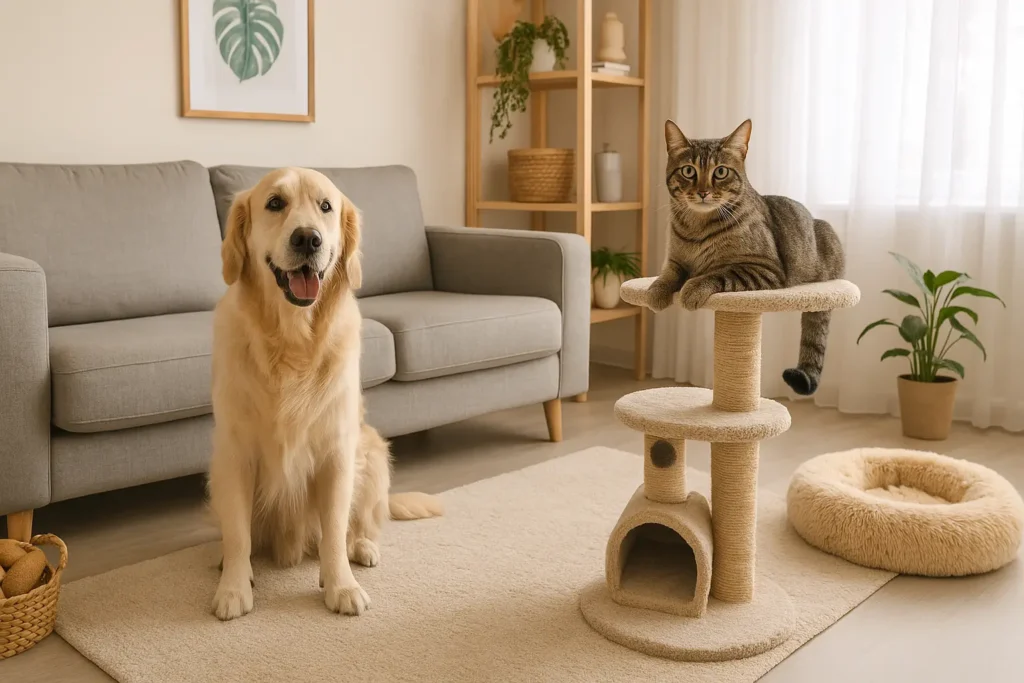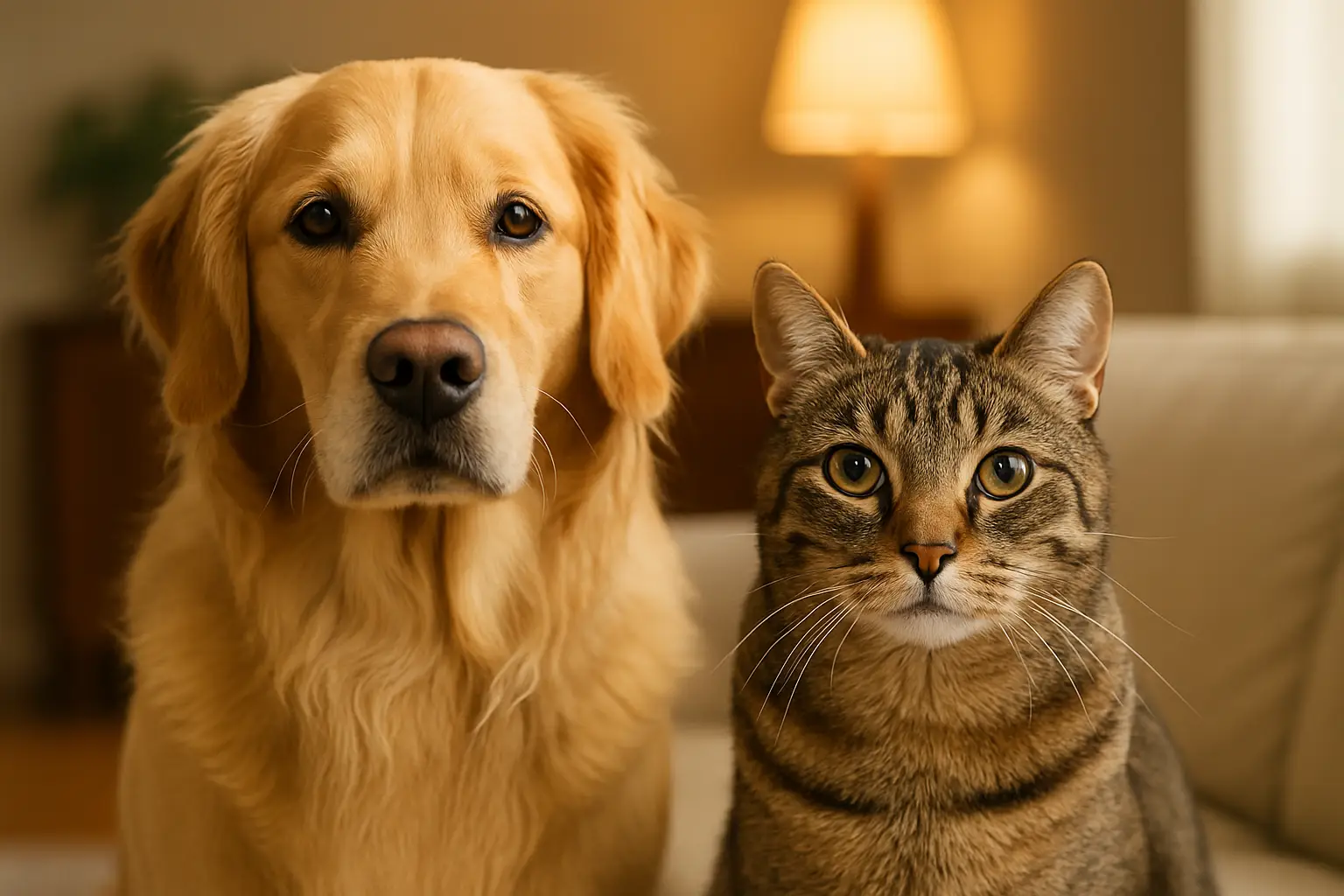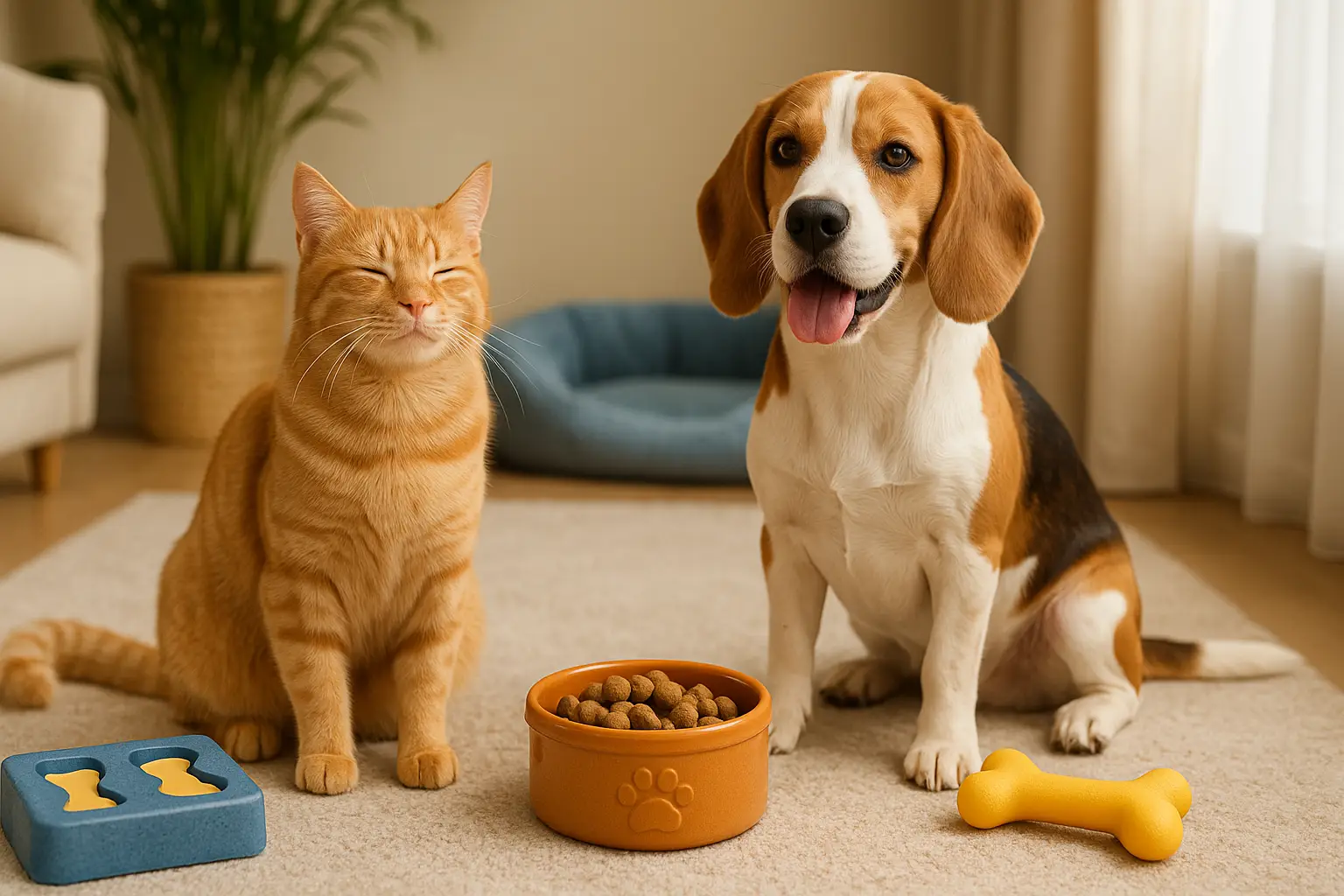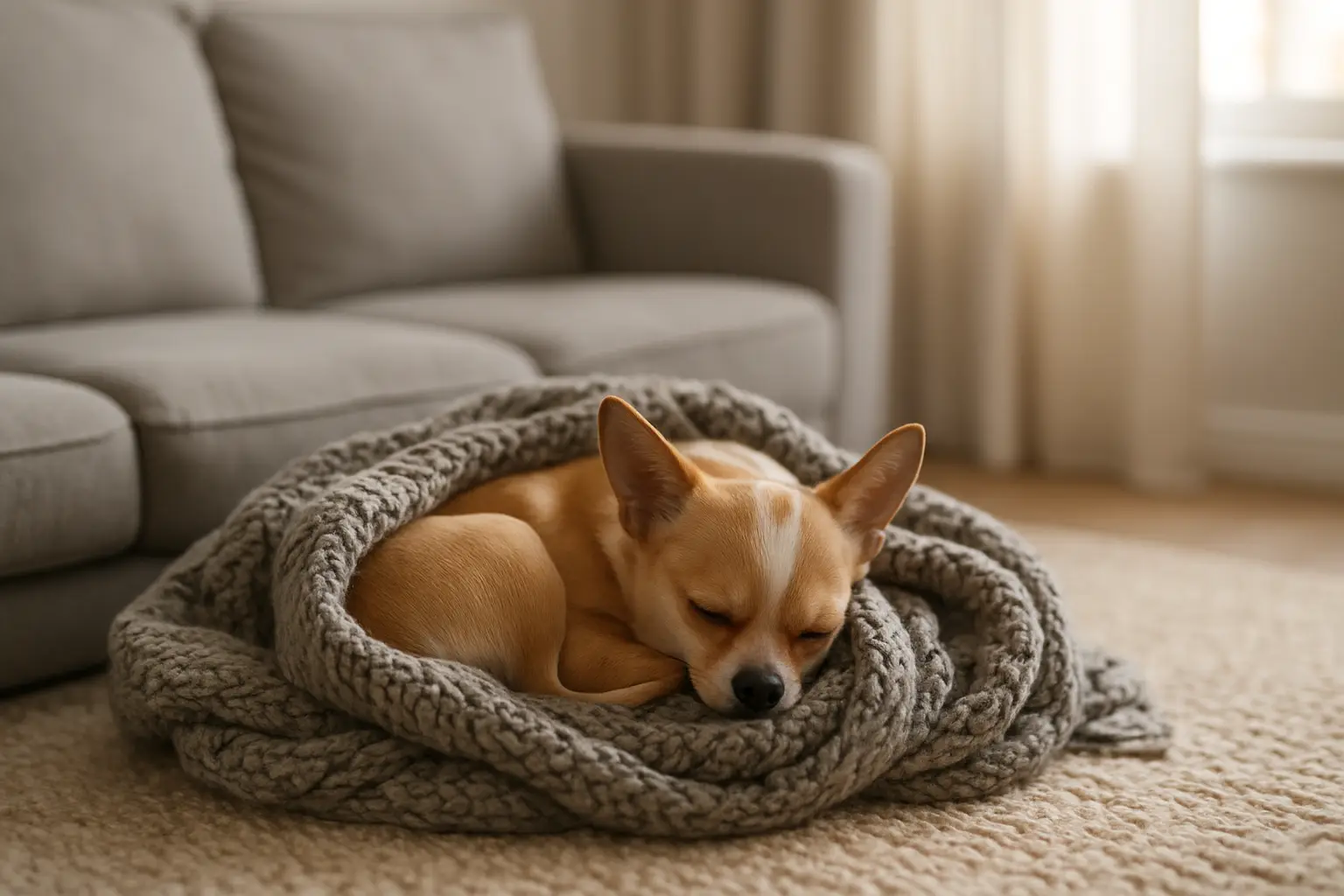How to Create the Perfect Home Environment for Dogs and Cats
Our homes are our sanctuaries—and if you live with a dog or cat (or both), your sanctuary needs to be shared. But designing a pet-friendly home doesn’t mean sacrificing comfort, cleanliness, or style. It means creating a space where every member of the family—human and furry—feels safe, enriched, and at ease.
A perfect home environment for pets is not just about preventing accidents or hiding valuables. It’s about meeting your pet’s emotional and physical needs through thoughtful organization, layout, and routine.
In this comprehensive guide, we’ll help you transform your home into a balanced, beautiful, pet-positive space that supports your animal’s health, behavior, and happiness.

Why a Pet-Friendly Home Matters
Pets spend most of their lives indoors. And the environment you give them directly shapes their behavior, comfort, and mood.
Benefits of a Pet-Friendly Home:
- Reduces anxiety and restlessness
- Encourages healthy routines
- Minimizes destructive behavior
- Improves overall health and hygiene
- Strengthens the human-pet bond
Think of your space not just as a home—but as your pet’s world.
Step 1: Understand Your Pet’s Core Needs at Home
Before rearranging furniture, identify what your pet needs every day.
Universal Pet Needs:
- Safe zones for rest
- Access to clean water and food
- Opportunities for movement and stimulation
- Safe exposure to light, scent, and sound
- Consistent access to bathroom areas (indoors or out)
- Protection from danger (electrical, choking hazards, toxins)
These needs apply to both cats and dogs but in very different ways.
Step 2: Designate Species-Specific Zones
Just like humans have bedrooms and kitchens, pets need defined areas too.
Dogs:
- Rest area: Crate, bed, or quiet corner
- Feeding zone: Easily cleaned space, away from foot traffic
- Play zone: Free of fragile items, with toys and space
- Outdoor access point: For toileting and fresh air
Cats:
- Resting spots: Elevated or enclosed, warm and quiet
- Litter area: Separated from food, low-traffic zone
- Climbing zone: Vertical spaces (cat trees, shelves)
- Observation points: Window views or sunny perches
- Scratch stations: To satisfy natural marking behavior
📐 WordPress block idea: “Create Your Pet Zone Map” with drag-and-drop or downloadable printout templates.
Step 3: Choose Pet-Friendly Materials and Furniture
Not all furniture or flooring is created equal—especially when paws are involved.
Flooring:
- Best options: Vinyl, tile, sealed hardwood, low-pile rugs
- Avoid: High-pile carpets, untreated wood, glossy laminate
- Bonus: Washable area rugs under feeding stations or litter boxes
Furniture:
- Best upholstery: Leather, microfiber, outdoor-rated fabrics
- Avoid: Tweed, chenille, velvet (prone to snags and odor retention)
- Protect: Use washable covers and anti-scratch protectors
🐾 Use a “Materials Cheat Sheet” block so readers can see quick pros and cons for each surface.
Step 4: Optimize Pet Feeding Areas
Meal zones are more than just bowls on the floor.
For Dogs:
- Use non-slip bowls
- Place away from foot traffic and doors
- Add a silicone mat underneath
- Store food in airtight containers nearby
For Cats:
- Place in quiet corners or elevated spots (away from dogs)
- Use shallow bowls to reduce whisker fatigue
- Keep at least 6 feet from litter boxes
- Rotate bowls or mats weekly to avoid boredom
Tip: Use slow-feeders or puzzle bowls to add enrichment while eating.
Step 5: Create Ideal Resting Spaces
Rest is sacred—and dogs and cats each have their own preferences.
Dogs:
- Soft but supportive beds in calm areas
- Crate with cozy bedding (optional door for autonomy)
- Access to quiet rooms during noisy activities (guests, cleaning, etc.)
Cats:
- Enclosed beds or pods in elevated spaces
- Hammocks on windowsills
- “Safe room” with beds, litter box, and toys
- Rotation of resting spots (seasonal or weekly)
🛏️ Block suggestion: “Top-Rated Pet Beds by Size” with affiliate options for different pet personalities.
Step 6: Add Vertical and Hidden Spaces for Cats
Cats live in 3D. They need vertical freedom to feel secure and stimulated.
Vertical Ideas:
- Cat trees or towers
- Mounted shelves with soft landings
- Top-of-fridge or bookshelf perches
- Hammocks or suction-cup ledges on windows
Hideaways:
- Cardboard boxes, fabric cubes, or small tents
- Under-bed nooks
- Behind furniture with low foot traffic
Cats need private, elevated places to self-regulate their nervous system.
Step 7: Build In Enrichment Opportunities
Mental stimulation prevents boredom and mischief.
Ideas for Dogs:
- Interactive toys or puzzles
- Frozen treats (yogurt in KONGs)
- Scent boxes or food treasure hunts
- Chew-friendly items based on age and strength
Ideas for Cats:
- Puzzle feeders
- Rotating toys (switch weekly)
- Feather wands, springs, catnip mice
- Video stimulation (fish tanks, bird cams)
🧠 Block Idea: “Weekly Enrichment Planner” to help readers rotate toys and games.
Step 8: Pet-Proof for Safety
Even the smartest pets get into trouble.
Safety Checklist:
- Cover exposed wires
- Store meds and cleaners in cabinets
- Use pet-safe houseplants (avoid lilies, aloe, pothos)
- Secure trash cans and food storage
- Use baby gates or pens if needed
- Anchor tall furniture (especially in cat homes)
☠️ Block Suggestion: “Top 10 Hidden Dangers in Your Home” as a visual checklist with icons.
Step 9: Make Bathroom Areas Easy and Consistent
Bathroom routines affect behavior and stress.
Dogs:
- Provide consistent outdoor schedule
- Use bells or visual cues at doors
- Consider artificial turf or indoor pee pads (small breeds, seniors)
- Clean with enzymatic products to remove odor signals
Cats:
- 1 litter box per cat + 1 extra
- Scoop 1–2x daily, deep clean weekly
- Use unscented clumping litter (avoid strong perfumes)
- Place in quiet, private spaces
- Avoid covered boxes unless your cat prefers them
🚽 Use a “Litter Tracker” block so readers can monitor issues like frequency or refusal.
Step 10: Keep Human Style and Functionality
Pet-friendly doesn’t mean design disaster.
Style Tips:
- Match pet beds to your room’s color palette
- Use woven baskets for toy storage
- Hang leashes on modern wall hooks
- Choose attractive litter box furniture
- Display framed pet photos in gallery walls
🎨 Highlight a “Pet Design Gallery” in a block format with before/after images for inspiration.
Step 11: Use Lighting and Sound Strategically
Light and sound shape your pet’s mood more than you might think.
Light:
- Provide sun patches and window access
- Use soft lamps in evening hours
- Avoid harsh overheads during rest time
- Consider blackout curtains for sensitive dogs or cats
Sound:
- Keep music soft and low
- Try white noise during stressful events
- Avoid sudden loud sounds (TV volume, alarms, doorbells)
- Talk to your pets regularly—your voice soothes them
🎧 Create a “Pet Chill Playlist” block with calming Spotify tracks.
Step 12: Involve Pets in Daily Household Life
Your home is also your pet’s habitat. Let them participate in your rhythm.
Ways to Include Pets:
- Invite them into morning or bedtime rituals
- Let them “help” during laundry, cooking, or gardening
- Take short breaks to sit with them during work-from-home days
- Read aloud to them (yes, really!)
- Offer space near you during meals or TV time
🧡 Presence is bonding. Make your pet part of the daily emotional flow of your home.
Final Thoughts: Home Is Where Their Heart Learns to Rest
A pet-friendly home doesn’t require big renovations. It asks for intentional love in the layout of your daily life.
When your space is organized to meet your pet’s needs, they thrive. They feel safe. They trust you. And in return, they give back joy, play, companionship, and presence.
So create that sunny window perch. Lay out the cozy bed in the quiet corner. Rotate the toys, refresh the water, and walk the same route with excitement.
Because when your pet feels at home—truly, deeply at home—that’s when the best of their heart begins to shine.




Post Comment